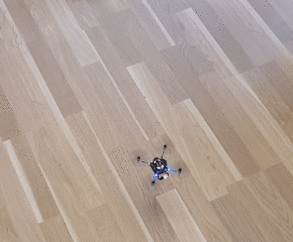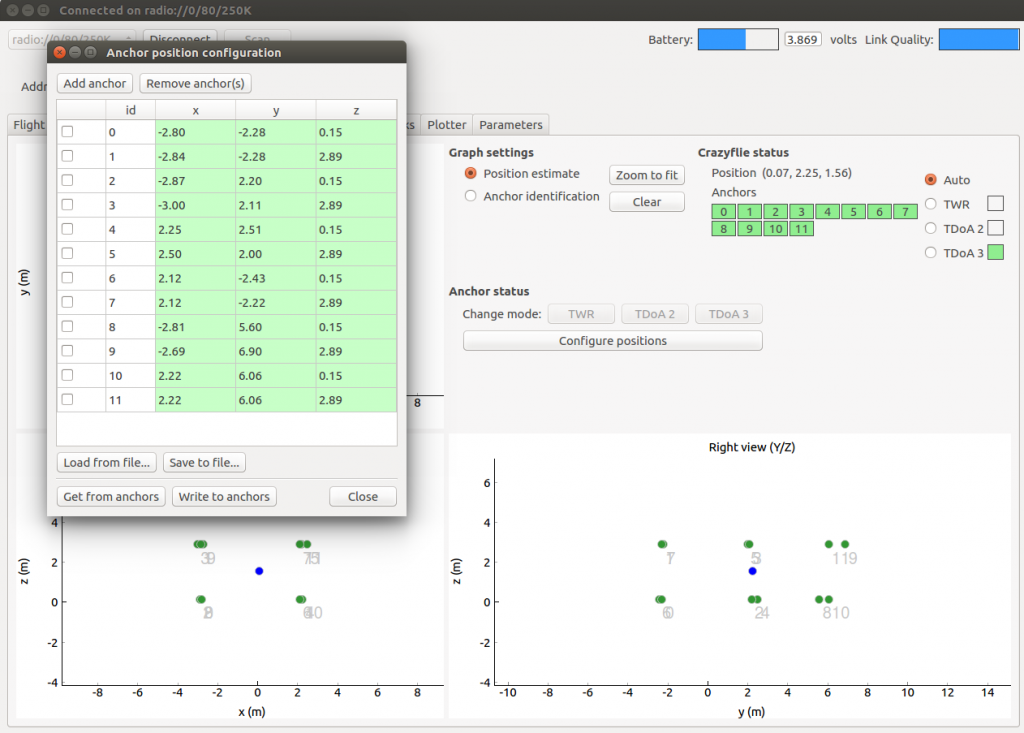Last week we have been focusing on making a release for nearly all our firmware and software. This was done mainly to support the new products we will release this fall but it also contains a lot of other functionality that have been added since the previous release. In this blog-post we will describe the most important features of this release.
New deck support
The Crazyflie firmware and Crazyflie client 2018.10 adds support for a range of new decks that are about to be released:
- Flow deck V2 and Z-Ranger V2: New versions of the flow and Z-Ranger deck that uses the new VL53L1 distance sensor. Drivers are implemented in the Crazyflie firmware and the client has been updated to allow flying up to 2 meter in height hold and hover modes when the new decks are detected.
- Multiranger deck: Diver for the new Multiranger deck is implemented in the Crazyflie firmware, support code is now present in the lib as well as an example implementing the push demo that makes the Crazyflie fly in hover mode using the flow deck and move away from obstacles:

The Flow deck V2 is already available in our webstore. The Z-Ranger V2 and Multiranger will be available in the following weeks, stay tuned on the blog for updated information.
Crazyswarm support
During the year, functionality implemented for the Crazyswarm project has been merged back to the Crazyflie firmware master branch. Practically it means that the Crazyflie firmware 2018.10 is the first stable version to support Crazyswarm. The main features implemented by Crazyswarm are:
- Modular controller and estimator framework that allows to switch the estimator or the controller at runtime. Practically it means that it is not required to recompile the firmware to use a different controller anymore.
- Addition of a high-level commander that is able to generate setpoints for the controller from within the Crazyflie. The high-level commander is usable both from Crazyswarm and from the Crazyflie python library. It currently has commands to take-off, land, go to a setpoint and follow a polynomial trajectory. It is made in such a way that it can be extended in the future.
- Addition of the Mellinger controller: a new controller that allows to fly much tighter and precise trajectories than the PID controller. It is tuned pretty tight so it is currently mostly usable using a motion capture or lighthouse as positioning and togeather with the high-level commander.
Improved and more stable Loco Positioning System
A lot of work has been put in the Loco Positioning System (LPS) this summer. The result of this work is the creation of a new ranging mode: TDoA3. TDoA3 allows to fly as many Crazyflie as we want in the system and to add as many anchors are needed, see our previous blog-post for more information. With this release TDoA 3 is added as a stable ranging mode for LPS. The added features related to LPS are:
- Added TDoA3 as a ranging mode in the LPS-Node-firmware, the Crazyflie 2.0 firmware and the Crazyflie client
- Revampted the Crazyflie client LPS tab and communication protocol to handle more than 8 anchors
- Implementation of a new outlier detector for TDoA2 and TDoA3 that drastically improve positioning noise and flight quality
Release notes and downloads
As usual the release build and release note is available on Github. The Crazyflie client and lib are also available as python pip package as cfclient and cflib.
